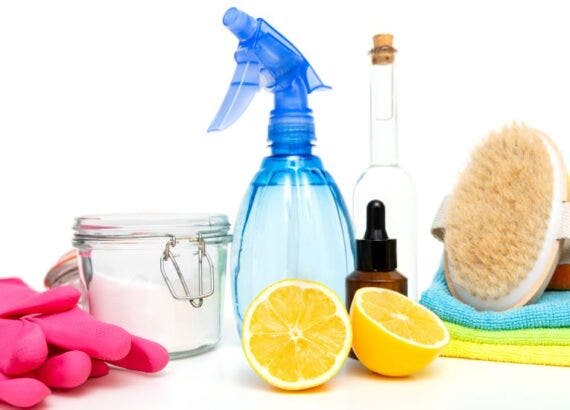How to Test Air Quality in Your Home

From wood burning stove, heavy traffic, vacuuming, cooking in your kitchen and many more, can have a huge impact on the air quality in your home and overall health.
This is because most of us spend about 90% of our time indoors*, and poor indoor air quality has been linked to asthma, allergies, cancer, and many other diseases.
That’s why it’s so important to test the air quality in your home every now and then. In this complete guide, we’ll go over many different ways to do that! We’ll also touch on some symptoms that indicate poor air quality and give you a few tips on how to improve it.
Table of Contents
Invest in an indoor air quality monitor.
An indoor air quality monitor should be able to monitor every potentially dangerous compound in your home. With an air quality monitor, you can test the air quality as often as you want. Most monitors offer continuous measurement of your air quality. All you need to do is charge it regularly.
Here’s how an air quality monitor works.
How It Works
The best air quality monitors measure the following:
TVOCs
TVOCs or total volatile organic compounds are potentially dangerous gases in your home. TVOCs are found or produced by cooking fumes, paints, smoke, glues, paints, and other similar items.
Every air quality monitor will be a little different, but make sure that this number is in the green or acceptable level at all times.
If it’s yellow, orange, or red, think about what activities you have been doing that could produce these compounds. Things like deep cleaning, heavy cooking, or painting, are the most common ones associated with TVOCs.
Humidity
Typically, anywhere between 30% and 50% is an acceptable humidity range. If your humidity level is consistently above 50%, this can be a prime breeding ground for mold spores and mildew.
The drier, the better. But, depending on the person, you may experience some symptoms from low humidity. These include irritation of the eyes, nose, and mouth, sore throat, or dry cracked skin.
If you live in a humid place, consider investing in a dehumidifier. Something like this from Amazon would be a great option. There are a few options depending on the size of your room, too.
Temperature
Extreme heat or cold can contribute to poor air quality, according to the Center for Science Education.
In the winter months, more people are burning wood and idling their cars to warm them up in the morning.
In mountainous areas like Salt Lake City or Denver, inversions are common. This is because these cities are in valleys surrounding mountains, which keep all the contaminated air inside.
The inversions get even worse in the cold months because a layer of warm air above the “bowl” traps the cool, polluted air in the valley. Check out the diagram below to see this in action.
PM 2.5
PM 2.5 describes particulate matter that is 2.5 microns in size. They are tiny particles produced mainly by factories, cars, and chemical reactions in our atmosphere.
These particles are not visible to the naked eye. But, during inversions, you might notice haze, which is made up of PM 2.5, PM 10 (particles 10 microns in size), and other pollutants.
Formaldehyde
Formaldehyde comes from fuel-burning appliances, furniture, some paints, and cigarette smoke, among other sources. It’s typically found in small quantities.
But if you smoke enough or use your gas stove without adequate ventilation, it can become hazardous to your health.
How to Use It
The default view for your air quality monitor should show you all the measurements that are available. We recommend reading the manual fully to understand how your specific air quality monitor works.
Most air quality monitors will need to be calibrated before you can use them to monitor indoor air quality. This involves turning it on for a set period of time before use.
Most monitors need to be calibrated outside in fresh air. Overnight is best for this because the air quality tends to be better later in the day.
Calibration gives the air quality monitor a baseline measurement of fresh air. This way it can accurately tell you if you are in the yellow, orange, red, or purple levels.
- Yellow – Moderate
- Orange – unhealthy for sensitive groups
- Red – Unhealthy, don’t exercise outside
- Purple – Hazardous, stay inside
Cost
Most air quality monitors cost between $75 and $200. The high-end ones can exceed $300. An air quality monitor is something you’ll use for years or even decades, it may be worth it to spend extra money on a higher quality product.
Here’s one of the most popular air quality monitors on Amazon. It’s about $100 and tracks a wide variety of air pollutants.
Related: Should I leave my air purifier on all the time?
Test radon levels in your home.
Radon gas is produced as uranium, thorium, and other radioactive elements release into the atmosphere from dirt and rocks. Exposure to high levels of radon can damage the lungs and ultimately lead to lung cancer. In fact, radon is the number one cause of lung cancer among non-smokers, according to the EPA.
To monitor radon in your home, you can invest in a radon detector like this one from Amazon.
Inspect your home for mold.
The first way to check for mold is to look for a musty smell. Also, look around at the corners of your walls, down at the baseboards, in closets with your HVAC systems, and in your attic.
Keep a close eye on the dampest areas of your home because those are optimal environments for mold to grow.
As you look for mold in your home, keep in mind that it may start growing close to the ground. Mold can grow quickly after a flood or other water damage.
An air purifier or dehumidifier can help keep mold growth at bay. Air purifiers don’t remove the mold spores specifically, but they will keep the moisture down.
Buy a carbon monoxide detector.
It’s important to watch the levels of carbon monoxide in your home. The best way to do that is to invest in a carbon monoxide detector. Household appliances such as water heaters, gas stoves, furnaces, and dryers produce trace amounts of carbon monoxide.
Fuel-burning appliances like gas stoves, grills, and fireplaces produce the most carbon monoxide. Wood-burning equipment and appliances also produce more CO than most other appliances.
A carbon monoxide detector like this one from Amazon is perfect for your home. You’ll want one CO detector for each level in the house. Another common place to put your CO detector is in your bedroom. Since you spend most of your time in the bedroom sleeping, it’s important to ensure that the air is clean and fresh.
Check for signs of poor indoor air quality.
Another way to “test” indoor air quality is to pay close attention to your symptoms. Instead of using equipment, listen to your body.
Here are a few questions you can ask yourself.
Are you experiencing irritation of the eyes, nose, or mouth?
Do you wake up often with a dry mouth or a sore throat?
Do you see smoke in your home every day?
Do you have shortness of breath?
Are you experiencing dizziness or headaches often?
This is not an exhaustive list of questions. But we wrote more about the detrimental effects of indoor air quality in this complete article. Check it out to learn more about symptoms of poor indoor air quality.
Note: If you’re feeling overwhelmed by all this info, just start with an air quality monitor. Yes, it’s a little bit of an investment. But it’ll give you all the air quality measurements you need.
If your air quality is poor, here’s what you can do.
Hopefully you’ve now tested your indoor air quality and it’s looking good! If that’s not the case, don’t worry.
Here are a few things you can do. And you should do them if your air quality is poor! Just look at all the benefits of clean air in your home!
Open doors and windows.
This is the easiest option available to you. It doesn’t cost any money, and everyone has windows and doors in their home!
Just make sure you turn off your AC or heater so you’re not venting cooled or heated air to the outside. Otherwise, money is going out the door!
Also, use your common sense. If it’s 90º out, you may only want to crack open a window. But on a nice day, you can open all the windows.
The more fresh air, the better. Be sure to check your outdoor air quality before you open all your windows. If you live in a smoky area with a lot of fires, you’ll want to stay closed up.
Or if you live next to a factory or power plant, you’ll want to find a different solution for tackling indoor air quality.
Check your indoor air quality here.
Invest in an air purifier.
An air purifier is a great option, especially if you live in an area with poor outdoor air quality. Air purifiers filter dust, dirt, cooking odors, and pet odors. Air purifiers are best at removing larger particles like dust and dirt, not gases like carbon monoxide or formaldehyde.
But, an air purifier with an activated carbon filter is effective at removing cooking odors. Take a look at some of the best air purifiers for cooking odors in our complete article.
For cooking exhaust and odors, invest in a range hood.
Many homeowners struggle to keep cooking odors at bay – especially the avid cooks! To keep smoke, cooking exhaust, and cooking odors out of your kitchen, invest in a professional range hood.
We have a wide selection of quality hoods that will last you for years to come. Browse them at the banner below.
For 13 more ideas on improving your indoor air quality, check out this complete article.
Thanks for reading our article on testing air quality in your home. We hope you found it helpful!
Again, if your air quality is poor, check out the article above. Try some of the different ways to improve your indoor air quality. It doesn’t have to be complicated! Good luck!
*https://www.epa.gov/report-environment/indoor-air-quality
As an Amazon Associate, we earn from qualifying purchases.







Comments are closed.